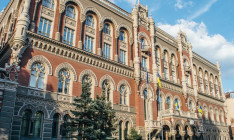Business
rejectionThe shutdown of South Stream did not increase Ukraine’s chances for attracting investors to the country’s Gas Transport System

Russia has been threatening Ukraine for several years with an alternative route of gas supply to Europe through the bottom of the Black Sea. Now, Russia has decided to shut down the project. Due to the uncertainty of the future role of Gazprom in gas supplies to Europe, however, the significance of Ukraine’s GTS remains under question.
Nobody’s building
On Monday, during his visit to Turkey President of Russia Vladimir Putin announced that the project of construction of the South Stream pipeline would not be implemented. He said the absence of support of the project on the part of Europe was the main reason for the shutdown of the pipeline’s construction. At the end of November, the European Commission announced that South Stream would not be developed further if it does not comply with European legislation under which half of the capacities for gas transport must be given to other gas suppliers.
No bypassing us
The shutdown of South Stream means that Ukraine will remain the main transit country of Russian gas to Europe for the next several years: last year Gazprom sold 160 bn cu m of gas to European consumers (through Ukraine, Belarus and the North Stream pipeline). 86 bn cu m of this volume was pumped through Ukraine. The throughput capacity of Ukraine’s GTS in the direction of Europe amounts to 142 bn cu m of gas per year, Belarus’ GTS – 38 bn cu m and North Stream – 55 bn cu m of gas per year.
Partner of the Russian consulting agency RusEnergy Mikhail Krutikhin believes that the shutdown of South Stream will be beneficial for Ukraine. “Ukraine preserves its significance as a transit territory for the supply of Russian gas to Europe. Both Gazprom and the Russian leadership will have to reckon with this role of Ukraine,” he believes.
Ukraine’s GTS, however, requires modernization to maintain its operations, the cost of which was officially estimated by the Ukrainian government at US $5.3 bn. Today, the government hopes to find an investor (which in exchange for participation in the management of the GTS will invest money into its modernization) and is planning to hold the corresponding tender. “Naturally, if there is no South Stream, the role of our gas transport system will increase,” Acting Minister of Energy and Coal Industry Yuriy Prodan said yesterday. Earlier, Premier Arseniy Yatsenyuk stated that Ukraine’s GTS is fully capable of coping with gas transit and there is no sense in investing money in the South Stream. “Ukraine once again calls on its European and American partners to invest into the Ukrainian GTS,” he said.
Foggy future
The shutdown of South Stream by Russia, however, does not mean that the attractiveness of the Ukrainian GTS will automatically increase. Participation of foreign investors in its management and modernization is beneficial on condition that supplies of Russian gas to Europe through Ukraine will not decrease in the future.
Nobody, however, can provide such guarantees at the moment. Krutikhin said it was difficult for him to predict whether Gazprom would preserve gas supplies to Europe at the level that would ensure profitable operation of the Ukrainian GTS. To date, Gazprom supplies around a third of the gas consumed in Europe. However, weary of the political nature of the gas issue Europe is trying to reduce its dependence on Gazprom. In particular, Lithuania, which earlier was 100% dependent on Russian gas, has successfully resolved this problem – within 18 months an LNG terminal was built in the country and at the end of October the first tanker with liquefied gas successfully docked at the terminal. Similar terminals are being built in Poland. Their construction is also planned in Croatia. Starting next year, the U.S. plans to begin supplies of liquefied gas to Europe.
Krutikhin pointed out that the commercial benefit from investments into the Ukrainian GTS is not evident at the moment. “In order for investors to appear they need guaranteed returns. So far, as I can see, gas transit is not a very profitable business. It is difficult to imagine a company that would want to finance something in conditions of political uncertainty and unpredictability of the main gas supplier – Gazprom,” he said.
Director for Energy Programs at the Razumkov Center Volodymyr Omelchenko is also skeptical about further hopes for turning a profit from Russian gas transit to Europe. “The transit of Russian gas brings Ukraine some money, but at the same time creates huge problems with Russia and the EU, which have equal interests in gas transit. When such major players have joint interests, there is no catch for Ukraine. Earnings from transit are not as significant as the troubles they bring,” the expert added.
History of the project
South Stream was launched in June 2007, when Gazprom and the Italian company Eni signed a memorandum of understanding for the construction of the pipeline. In 2008, the agreements on the project’s implementation were signed between Russia and Austria, Bulgaria, Hungary, Greece, Serbia, Slovenia and Croatia.
The construction of South Stream began in December 2012 in the area of Anapa (Krasnodar Krai) and in October of last year the first joint of the Bulgarian stretch of the pipeline in the area of the Rasovo station was welded. In November 2013, construction of the Serbian section started in the vicinity of the village of Sajkas. It was planned that the gas supplies via the South Stream would begin at the end of 2015.
It was also planned that South Stream would be capable of transporting 63 bn cu m of gas per year to Europe. Gazprom explained the necessity of building South Stream by the fact that the demand of European countries for gas would grow by 80 bn cu m per year by 2020 and by another 60 bn cu m per year by 2030. These calculations, however, turned out to be wrong – in 2013 Gazprom exported only 160 bn cu m of gas to Europe and this year the export volume will decrease.
The cost of construction of South Stream was estimated at EUR 56 bn and around US $5 bn was already invested into the project’s implementation.












 of the agreement of syndication with Financial Times Limited are strictly prohibited. Use of materials which refers to France-Presse, Reuters, Interfax-Ukraine, Ukrainian News, UNIAN agencies is strictly prohibited. Materials marked
of the agreement of syndication with Financial Times Limited are strictly prohibited. Use of materials which refers to France-Presse, Reuters, Interfax-Ukraine, Ukrainian News, UNIAN agencies is strictly prohibited. Materials marked  are published as advertisements.
are published as advertisements.